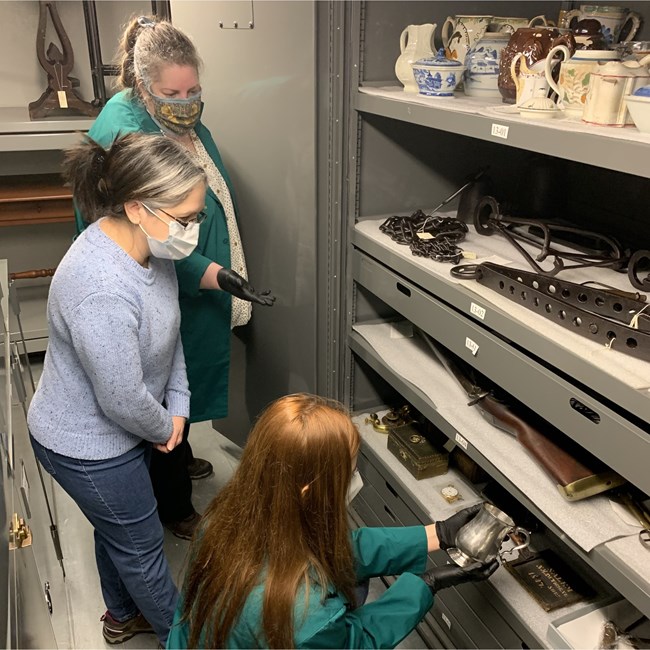Last updated: March 23, 2022
Article
Preserving the Iron Works

NPS Photo / Claire Norton
In the early twentieth century a newfound interest in American heritage and colonial revival led to a preservation movement. Preservation of the iron works started with the restoration and protection of the Iron Works House.
In 1915, the house was up for sale, and many were concerned about its fate. William Sumner Appleton, founder of the Society for the Preservation of New England Antiquities (SPNEA, later renamed Historic New England), had a strong interest in the property. Sumner had a family connection to the house and wanted to see it preserved. He tried to convince many groups and individuals to purchase the property in order to protect it. Eventually, he convinced photographer Wallace Nutting to purchase the house. Nutting restored the house to an idealized version of what it may have looked like in the 1600s. He used the house as a studio for photography and as a public attraction until he sold it in 1920.
Women often played a large part in the preservation movement. For a time, the preservation of historic homes fell into the domestic sphere, and was therefore considered "women's work." Women's groups such as the Daughters of the American Revolution often took on preservation projects. As the field developed from a hobby to a profession, men became more and more involved. This pattern, which was occurring all over the country, repeated itself at Saugus.
Many early supporters of Saugus' historic preservation were local residents, especially women. After being for sale for several years, the building was purchased, with plans to be removed to Michigan in 1941. Saugusonians were upset to hear the house would leave Saugus. The First Iron Works Association formed in 1943 with the mission of purchasing and preserving the Iron Works House. As with other historic sites, such as Mount Vernon, the local chapter of the Daughters of the American Revolution got involved. One member in particular, Louise Hawkes, had been involved in an effort to purchase and open the house to the public for years prior. School children were recruited to collect donations around town. Finally the home was purchased by the Town of Saugus in 1944, and in 1945, the town authorized the lease to the First Iron Works Association.
During the 1940s and 1950s, an excavation was funded by the American Iron and Steel Institute, and Roland W. Robbins was hired as the lead archaeologist. Professional archaeologists, historians, scientists, and architects worked together to build the iron works reconstruction.
In 1968, by an Act of Congress, the iron works became Saugus Iron Works National Historic Site and was officially added to the National Parks system. The site was established through Public law 90-282. Today, preservation work continues to be carried out by National Park Service staff so that the site may be understood and enjoyed by future generations.
